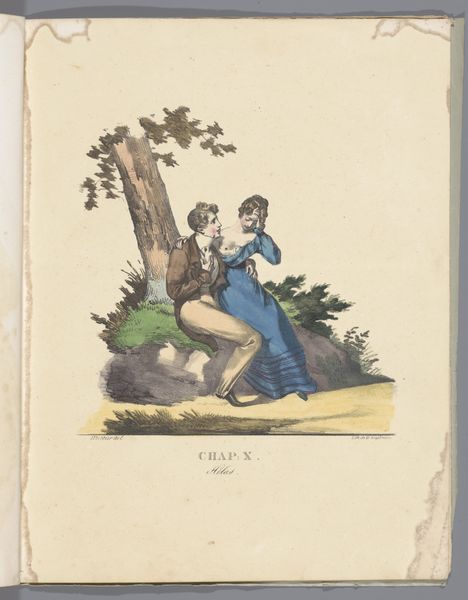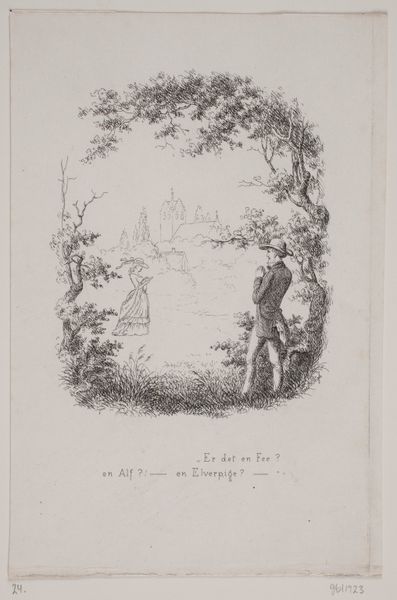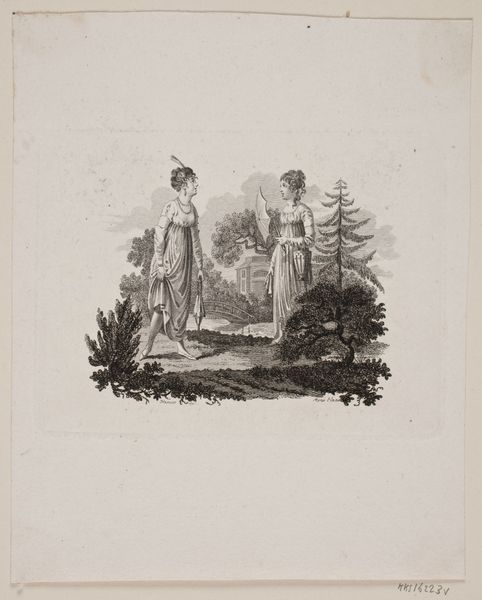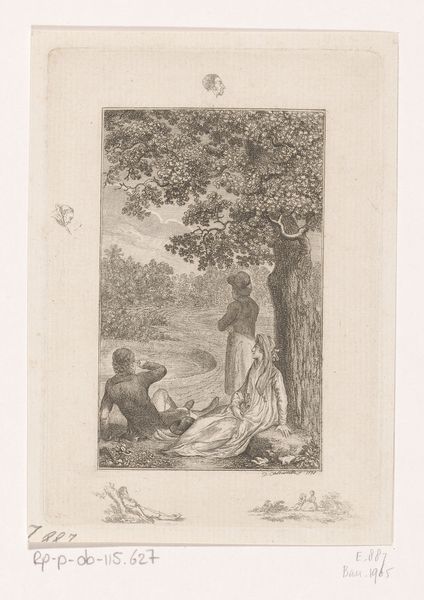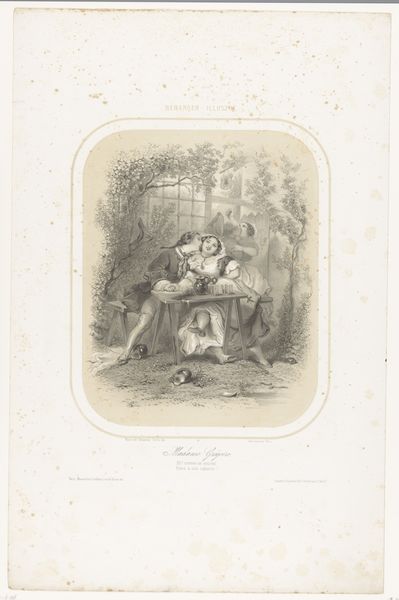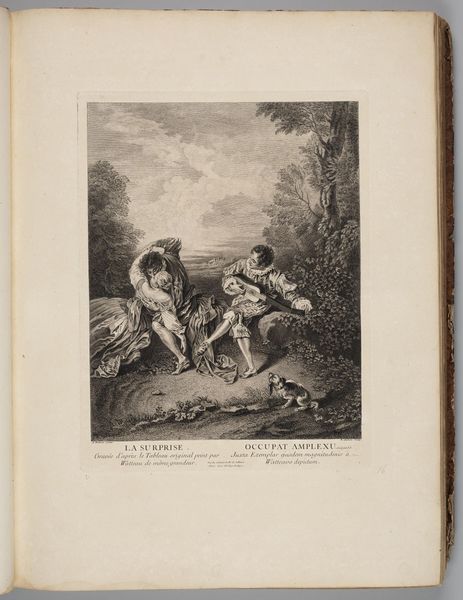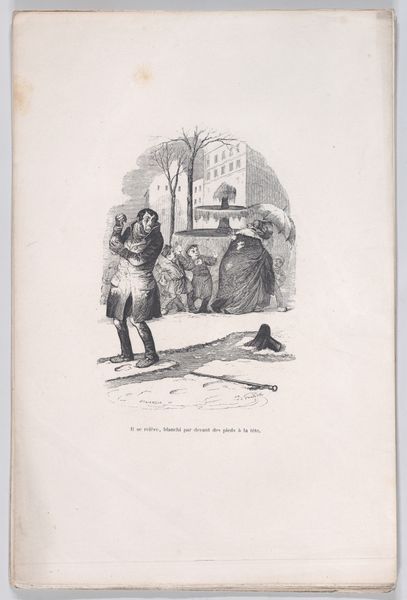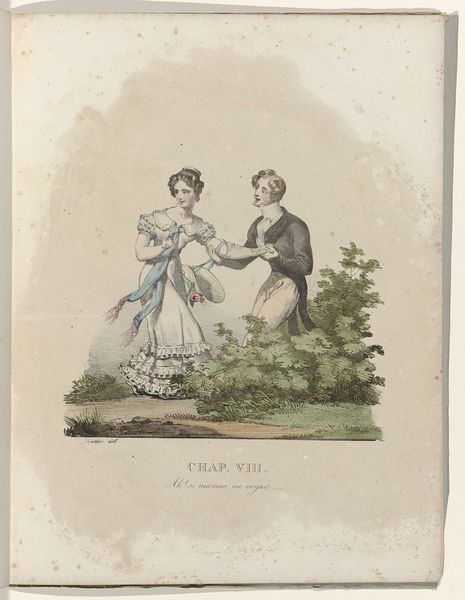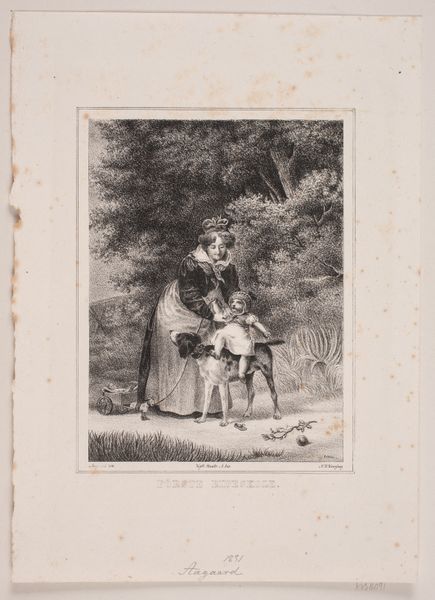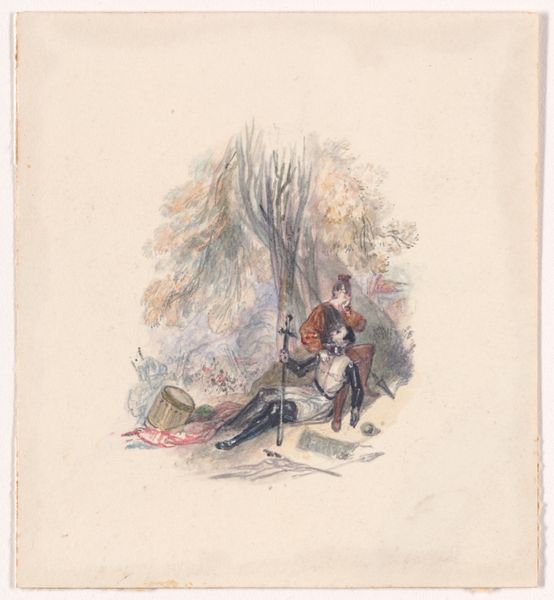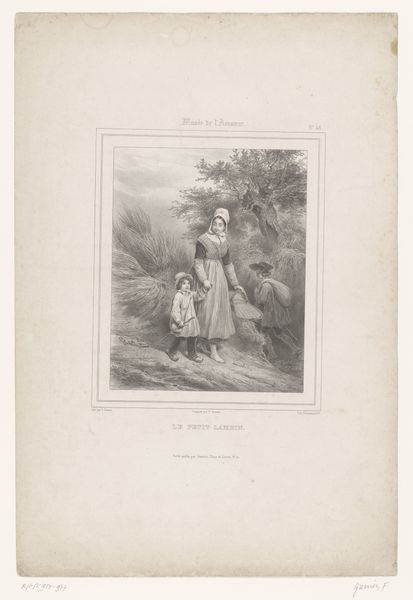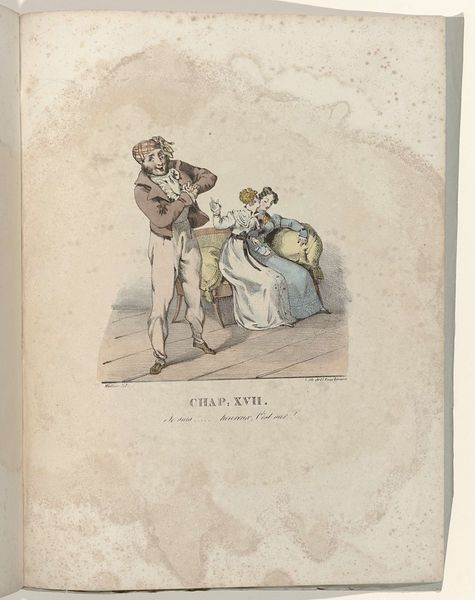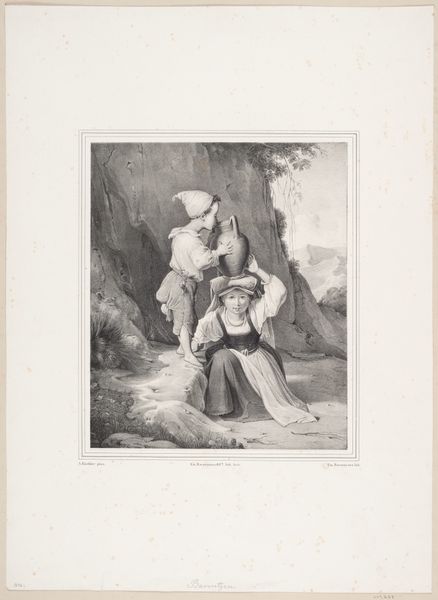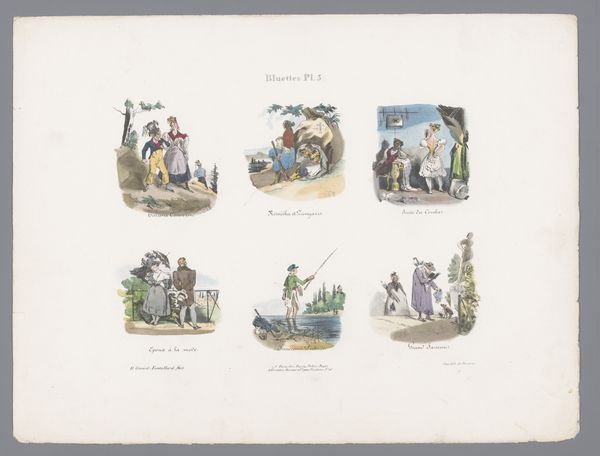
La Né d'une Modiste, 1828 : Chap. VII: Il m'attendait ! c. 1828
0:00
0:00
lithograph, print
#
toned paper
#
light pencil work
#
quirky sketch
#
narrative-art
#
lithograph
# print
#
pencil sketch
#
figuration
#
personal sketchbook
#
romanticism
#
sketchbook drawing
#
watercolour bleed
#
watercolour illustration
#
genre-painting
#
sketchbook art
#
watercolor
Dimensions: height 344 mm, width 266 mm
Copyright: Rijks Museum: Open Domain
Curator: Immediately, I sense a somewhat fraught encounter; there's an air of anticipation, maybe a touch of apprehension? Editor: Let's delve into the details. What we're observing here is "La Née d'une Modiste, 1828: Chap. VII: Il m'attendait !" a lithograph print by Gottfried Engelmann from circa 1828, now held at the Rijksmuseum. Engelmann was quite a figure in popularizing lithography at that time. Curator: Lithography lends itself to such fine lines; observe the details in the figures' attire, and the use of the toned paper as ground is great! I'm interested in the context. The inscription suggests this is a scene from a story—"Chapter VII: He was waiting for me!" How does the museum present this work within the broader narrative of 19th-century print culture? Editor: The Rijksmuseum contextualizes Engelmann’s prints by focusing on his role in disseminating popular imagery and narrative scenes in a time when literacy and visual culture were expanding. Genre scenes like this provided visual stories for a growing middle class. How do you see the figures' poses contributing to that narrative? Curator: Well, note the man's crossed arms – almost defensive, though perhaps merely nonchalant. The woman appears smaller, with her tentative pose as she’s almost shrouded in fabric. I'm thinking a societal commentary regarding gender and class? What was the role of printmakers like Engelmann, shaping public opinion or merely reflecting existing values? Editor: That's precisely where historical analysis is critical. Printmakers were businessmen catering to specific audiences. They both shaped and reflected the norms. Prints were relatively accessible goods—cheaper than paintings, traded and distributed at an astonishing scale across Europe. They democratized art viewing while subtly upholding class structures. Curator: Fascinating. Looking back, examining the material qualities of a simple print reveals so much about societal roles, print production, and consumption in 19th-century Europe. Editor: Indeed. And through examining the historical reception and placement within collections such as the Rijksmuseum we can continuously reinterpret the role of these images and Engelmann's contribution in our contemporary understanding of art and society.
Comments
No comments
Be the first to comment and join the conversation on the ultimate creative platform.
